Last Chance to Catch NYC's Holiday Notalgia Train
We met the voices of the NYC subway on our nostalgia ride this weekend!


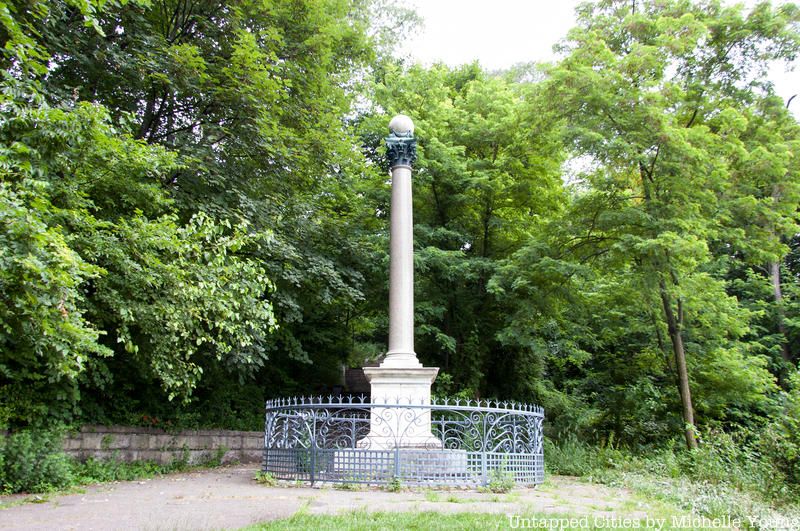
Prospect Park, a sprawling green oasis in Brooklyn known today for its peaceful meadows and picturesque architecture, has a violent past. During the 18th century, the rambling hills, dense forest and open flatlands of Brooklyn that Frederick Law Olmsted and Calvert Vaux would later come to transform and incorporate into their park, were the site of the largest battle of the revolutionary war.
The Battle of Brooklyn, also known as the Battle of Long Island, was the first conflict after the July 4th signing of the Declaration of Independence in 1776 and it was a defeat that took the lives of around 1,000 American soldiers. This revolutionary history was actually part of the reason this site was chosen to create the park on top of and over two hundred years later, remnants of the battle can still be seen today. Discover the revolutionary remnants of Prospect Park:
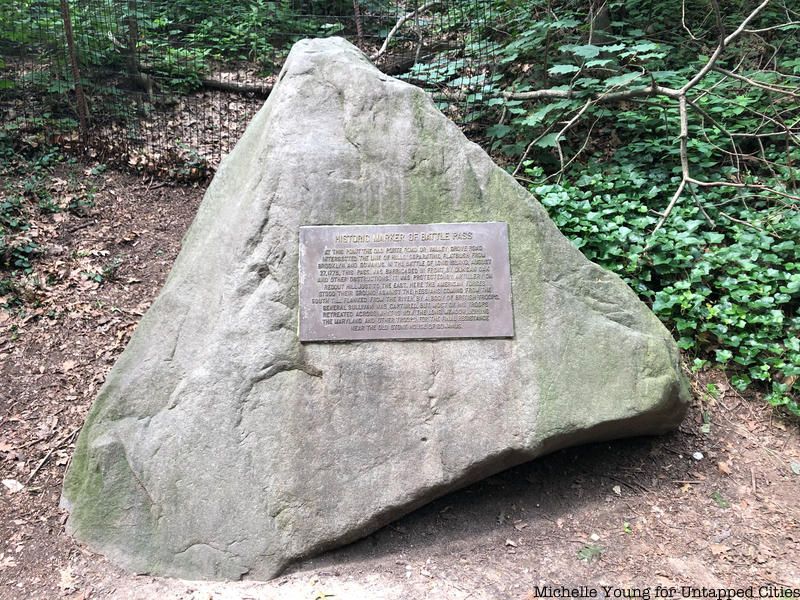
Along East Drive visitors to the park will find a series of bronze plaques dedicated to American efforts during the battle. The location of the plaques denotes the line of defense the Americans put up along the ridgeline that extends from today’s Green-Wood Cemetery, through Prospect Park to Mount Prospect Park. One of the points of entry along this defense line was Flatbush Pass, a path between rugged hills on today’s East Drive. This spot is marked by a small rock on the ground on the west side of East Drive known as Battle Pass Rock.
Dedicated in 1929, the plaque’s inscription says that it marks the spot where the old Porte Road or Valley Grove Road intersected with the line of hills separating Flatbush from Gowanus. This pass was blocked during the battle by a large white oak tree, known as the Dongan Oak (which has its own monument), that was chopped down to sure up the front of the defensive line. To the east, the pass was guarded by artillery. The inscription describes how the British came upon the Americans from the river and forced them to retreat across what is now Long Meadow.
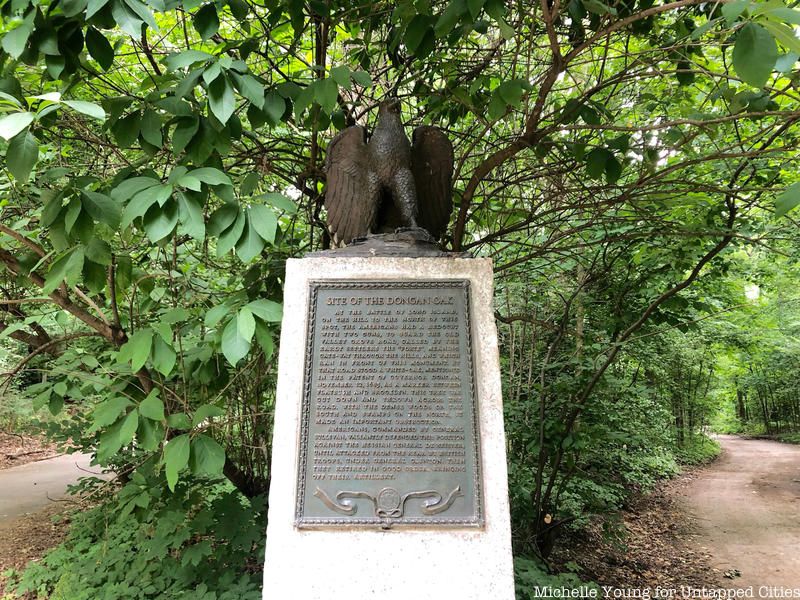
The Dongan Oak, a massive white oak tree which was felled in order to block the Hessian troops from advancing into the hills has its very own monument in Prospect Park. The monument depicts a bronze eagle, wings outspread, perched atop a granite pedestal with a bronze plaque that describes the importance of the Dongan Oak. The monument was dedicated by the St. Nicholas Society in 1922 at the cost of $2,000.
The original eagle, sculpted by Frederick W. Ruckstull who also worked on Soldiers’ and Sailors’ Memorial in Major John Mark Park in Jamaica, Queens, was stolen from the park in 1974. The pedestal remained eagle-less until 1991 when the Prospect Park Alliance sponsored the restoration of the monument and a replacement eagle created by sculptor John Metrovics. The replacement eagle was modeled based on historic photographs cast at the Sculpture House, the original foundry used for the first eagle. Again, after a new rededication, the replica eagle was stolen! The eagle standing atop the monument now is the third iteration.
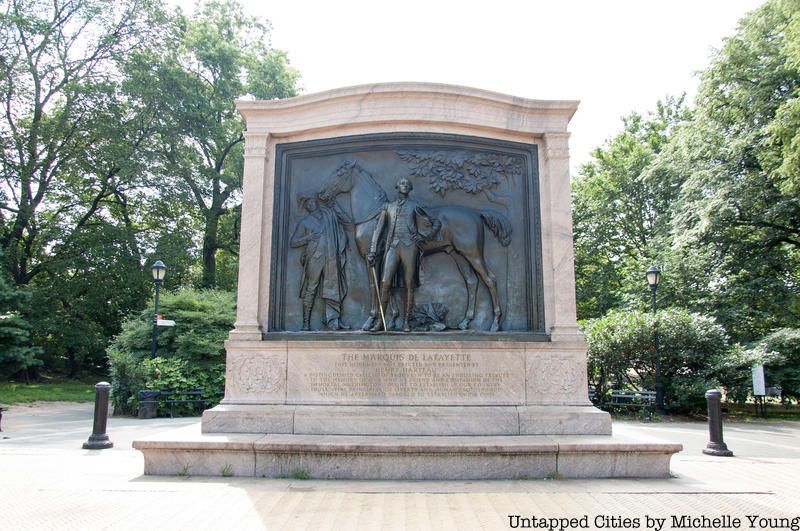
At the 9th Street entrance to Prospect Park, you will find one of the many New York City statues dedicated to the French-born Revolutionary War hero the Marquis de Lafayette. The bronze relief, carved by Daniel Chester French (who sculpted Abraham Lincoln in Washington D.C.’s Lincoln Memorial), depicts Lafayette standing proudly amongst an African American groomsman and his steed. The nearly ten-foot-high relief was a gift of Henry Harteau, a Brooklyn glass insurer of French ancestry, and was unveiled by representatives of the French War Commission in 1917. The bronze relief is set inside a massive pink granite frame designed by architect Henry Bacon.
During the Revolutionary War Lafayette, a Frenchman sympathetic to the American cause, became the right hand man of General George Washington. In 1777 he was made Major General in the Continental Army. After America won independence, Lafayette went on to play a leading role in the French Revolution of 1789 and remained close friends with George Washington (even naming a son George Washington Lafayette).

Standing at the base of Lookout Hill, a Stanford White-designed monument commemorates the heroic stand of “The Maryland 400.” During the battle a contingent of just 400 American soldiers held off the thousands of Hessian and Scottish invaders long enough for George Washington and his troops to retreat across the Gowanus Creek. The battle cost more than half of the Maryland Regiment. The hundreds of American soldiers who died were buried at a plot somewhere near Third Avenue between just west of the park (despite a plaque at the VFW post, there is much debate as to the actual location of the burial site).
Similar in form to White’s Prison Ship Martyrs Monument in Fort Greene Park, The Maryland Monument is made up of a polished granite column stretching twelve feet high, topped with a marble orb. It was designed by White for free and donated by the Maryland Society of the Sons of the American Revolution. The pedestal, inscribed with an inscription attributed to George Washington (“Good God! What brave fellow I must his day lose,”) was donated by the Brooklyn Parks Department. The wrought iron fence was added later. The monument was dedicated on the 119th anniversary of the battle in 1895.
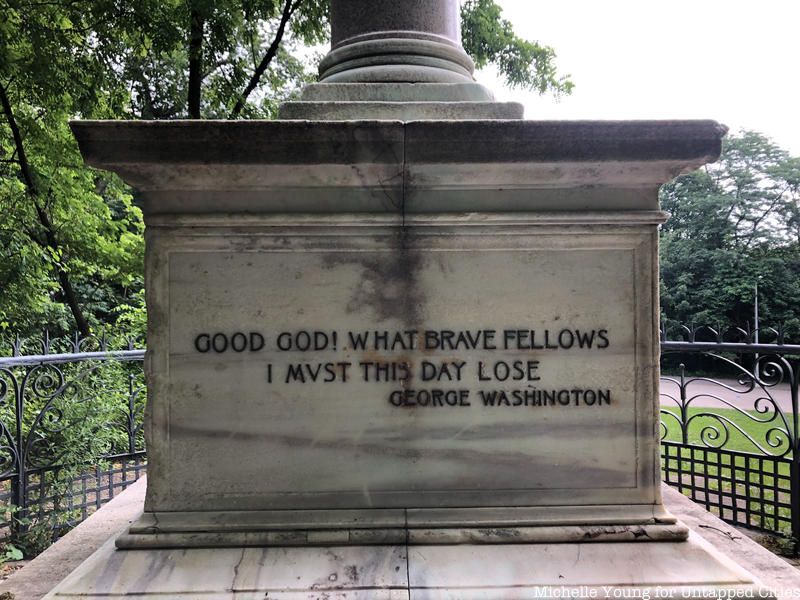
Next, check out The Top 12 Secrets of Brooklyn’s Prospect Park and Find the Remnants of King George III’s Statue, Toppled in Bowling Green in 1776 and find out How New Yorkers Celebrated When British Troops Left Manhattan
Subscribe to our newsletter